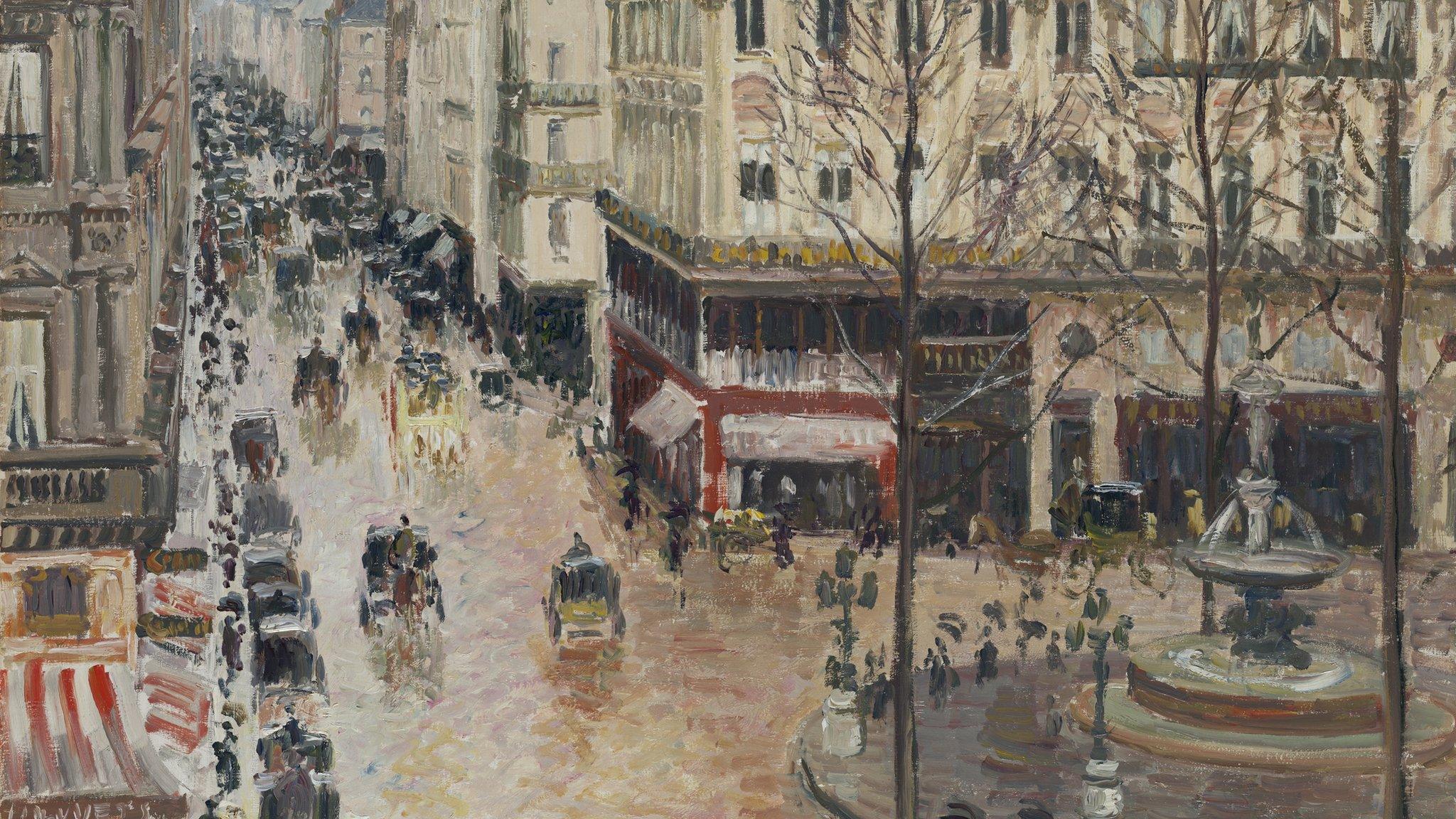US Supreme Court hears dispute over Nazi treasure trove
- Published
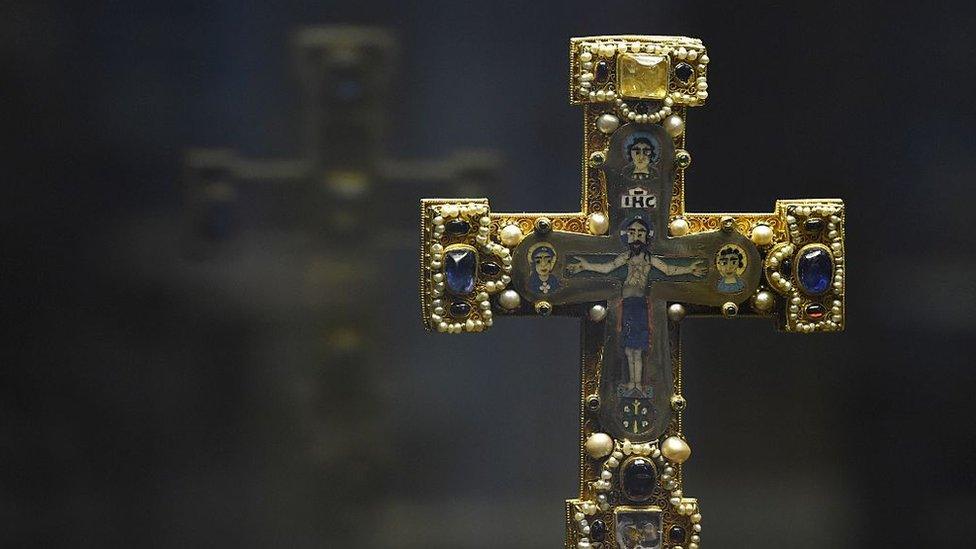
A crucifix that is part of the "Guelph Treasure"
The US Supreme Court has heard arguments over a collection of medieval artworks that Nazi Germany acquired from Jewish art dealers.
US descendants of the dealers allege the treasure trove, once owned by German royalty, was coerced out of their possession in a "forced sale".
With Germany's backing, the foundation that owns the pieces has called for the suit to be dismissed.
The collection is said to be worth at least $250m (£187m).
It has been on display in a Berlin art museum since 1963 and is now owned by the Prussian Cultural Heritage Foundation - the governmental entity that houses the collection.
The high court's ruling could open the door for foreigners to use US courts to litigate alleged injustices in their own countries.
The case centres on the Guelph Treasure, or Welfenschatz in German, a collection of 42 church art works - including altars, crosses and other Christian relics - made between the 11th and 15th centuries and passed down from one of Europe's oldest princely houses.
A consortium of Jewish art dealers purchased the entire collection a few months prior to the stock market crash of 1929, but sold most of the works at a reduced price in 1935 to the former German state of Prussia.
Hermann Göring - founder of the Gestapo secret police - may have then presented the Guelph Treasure to Nazi leader Adolf Hitler as a gift, but the two sides of the lawsuit dispute this claim.
In their 12-year legal battle, the plaintiffs have alleged the sale was coerced - at one third of the collection's value, they estimate - as part of Nazi Germany's campaign to persecute its Jewish population and confiscate their possessions.
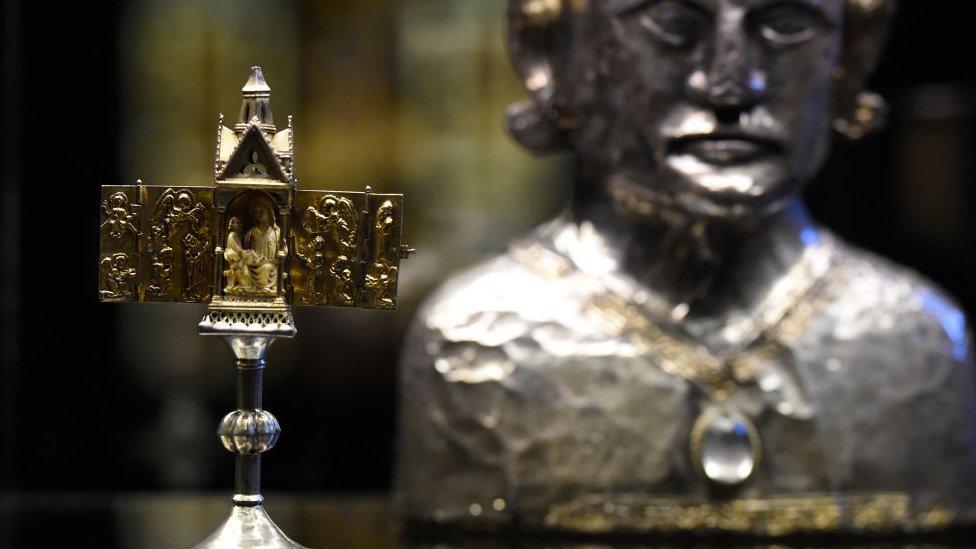
A retractable altar, part of the "Guelph Treasure"
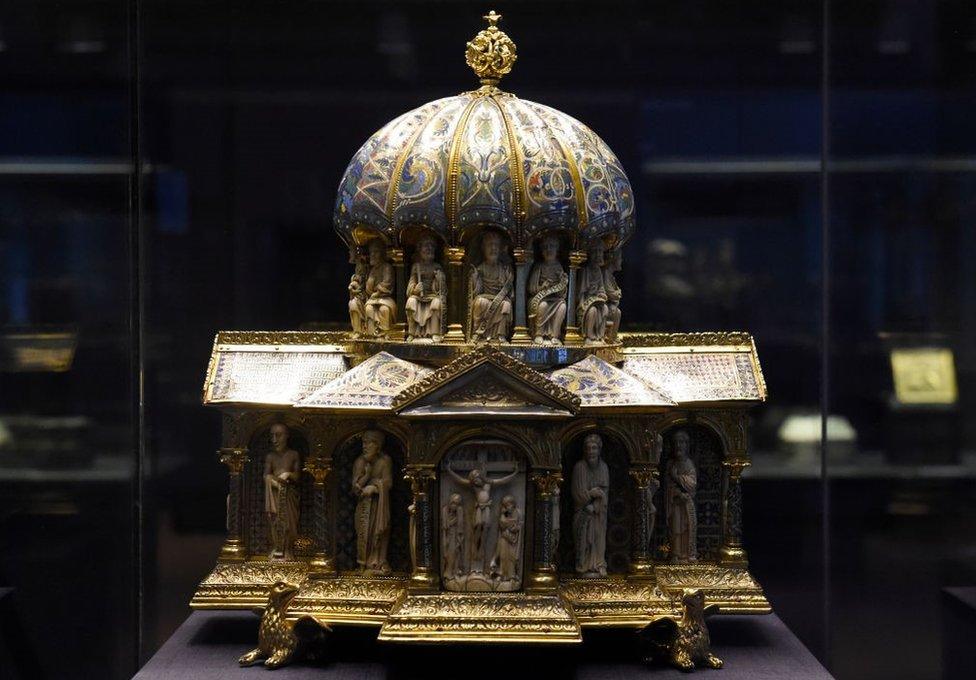
The cupola reliquary once stored the bones of a saint
US law bars civil suits against foreign governments, except in the rare case of violations of international law, and the heirs' attorneys have successfully argued in lower courts that "if such a coerced sale is not a taking in violation of international law, then nothing is".
The case, heard by the the Supreme Court on Monday, will decide whether they can keep fighting in US courts for either the return of the treasure or for its value in damages.
The Prussian Cultural Heritage Foundation underscored that it takes the claims seriously, but said the sale was made voluntarily and at fair market value. It cited the recommendation of an independent expert commission on Nazi-looted art to keep the treasure in Berlin.
Calling for the suit to be dismissed, the foundation's president Hermann Parzinger said: "Our view is that Germany is the proper jurisdiction for a case which involves a sale of a collection of medieval German art by German art dealers to a German state."
The German government - previously a co-defendant in the lower court cases - has supported calls for the suit's dismissal, as does the US government.
The Supreme Court is expected to make its ruling by June 2021.
Legal experts say the case may result in many other international disputes coming before US courts, dramatically expanding their jurisdiction.

A bust reliquary of Saint Blaise, a physician who lived in what is now Turkey
One lower court judge noted a ruling against the Germans "would likely place an enormous strain not only upon our courts but, more to the immediate point, upon our country's diplomatic relations with any number of foreign nations".
The search and return of artwork confiscated or stolen by the Nazis is a lengthy process, often made longer by arduous court battles. Last year, a woman in Europe lost her 14-year fight to wrestle her Jewish ancestor's art back from a Spanish museum.

You may also be interested in:
Security camera footage showed figures with torches and tools smashing one of the cabinets
Related topics
- Published24 October 2019
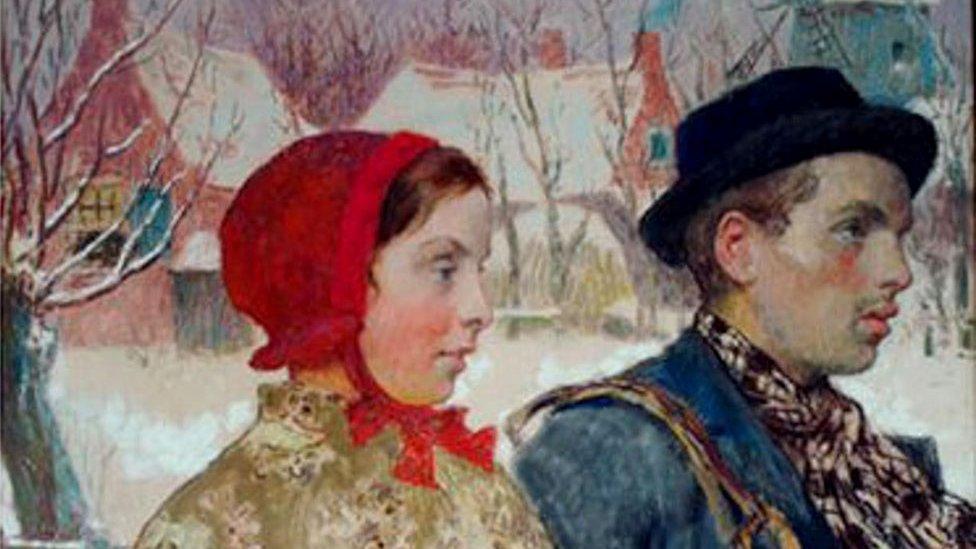
- Published1 May 2019
